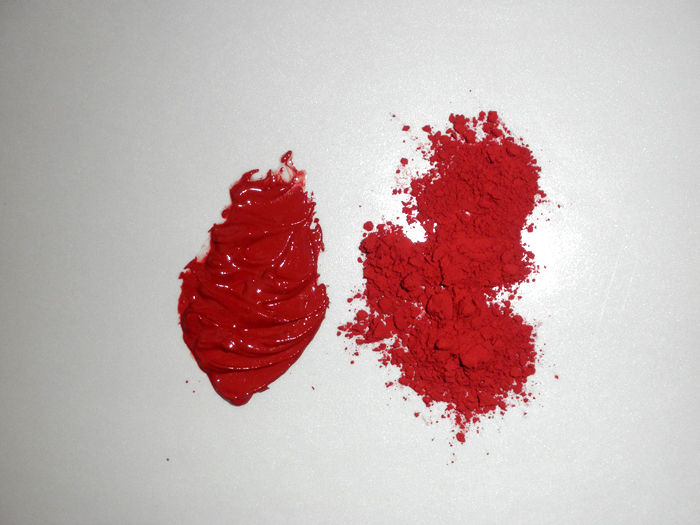Shown below is my favorite red, cinnabar. It is a pigment found as a mineral in nature and can have a wide variety of hues from bright fire red to a more subtle coral red. The principle property is mercury. It can have striations of opal, quartz, calcite and other minerals. According to Anita Albus in her book, Art of Arts, it is a Greek word, kinnabari, which derives from the Persian. In Theophrastus’ (a pupil of Aristotle) book, History of Stones (ca. 372-287) cinnabar is the oldest of all European lapidaries.
It is absolutely my favorite red due to its subtle delicate beauty. There is no risk of this pigment overpowering any other color in a mixture because of the nature of low intensity. I will be using both cinnabar and vermilion in this Greek painting commission and will be showing details of the painting as it progresses. Squint and compare this color with the 2 colors in the previous entry, vermilion and cadmium red. Can you see the natural beauty in the cinnabar over that of the other two pigments?
Rublev Cinnabar, mixed with linseed – left, dry pigment – right

